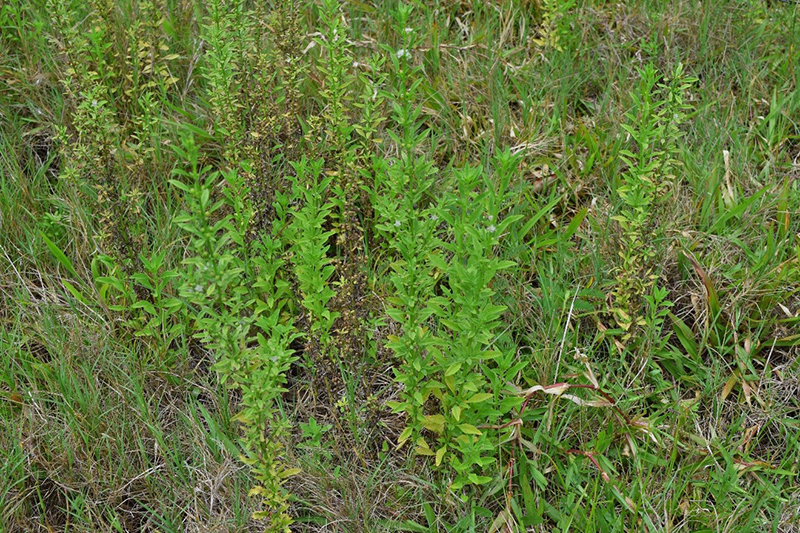Goatweed (Figure 1), also known as sweet broom (Scoparia dulcis) has been a problem in Florida pastures and hayfields for many years. Dense infestations of goatweed are quite common throughout the state. In most cases where goatweed density is extremely high, the pasture has been disturbed, overgrazed or sod has been lifted. In addition limited forage growth due to decreased daylength and environmental conditions during the winter months results in an increase in goatweed density .
Goatweed is considered an annual weed, but it can also be considered a perennial in South Florida. Plants can grow at least 36 inches tall, with leaves 0.5 to 3 inches long on short petioles. Each goatweed plant is capable of producing thousands of seeds that are approximately 0.25 mm in diameter that can be spread by wind, water, and equipment. In North Florida, this weed flowers and sets seeds many times until frost. In South Florida, it appears that flowering and fruiting can occur year-round.
A study was conducted at the University of Florida in the mid 1980s that investigated goatweed seed germination. The authors found that goatweed seeds do not germinate under dark conditions. This means that there must be at least some light for germination to occur. In fact, as little at 6 hours of light resulted in approximately 18% germination, with maximum germination occurring with 9 to 13 hours of light. Therefore, a thick, healthy sward can limit the goatweed seed germination in a pasture.
Proper pasture management can go a long way in controlling this weed, especially if you consider that this plant can tolerate 2 lb/acre of glyphosate quite well. To date, the only sure-fire herbicide for goatweed control in pastures is metsulfuron at 0.3 oz/acre, which is a problem for producers who graze bahiagrass as metsulfuron has the potential to severely injure ‘Pensacola’ type bahiagrass. For bahiagrass, 2 qt/acre of 2,4-D or a tank-mix of GrazonNext HL at 24 oz + 1.5 qt/acre 2,4-D will be needed for satisfactory control. However, complete control in bahiagrass is rarely achieved with one application. In bermudagrass and stargrass, combining these two herbicides (2,4-D and metsuluron) is an option and the rate of 2,4-D could be lowered to 1 qt/acre. In limpograss pastures or hayfields metsulfuron at 0.3 oz/acre or Chaparral at 3.0 oz/acre has provided consistent control.
For more information contact your county’s UF/IFAS Extension Agent or see Goatweed Biology and Control in Pastures.
- The Use of Drones in Pasture Weed Management - June 20, 2025
- Goatweed Control in Pastures and Hayfields - October 4, 2019
- Thinning the Pawpaw Patch in Your Pastures - May 18, 2018

